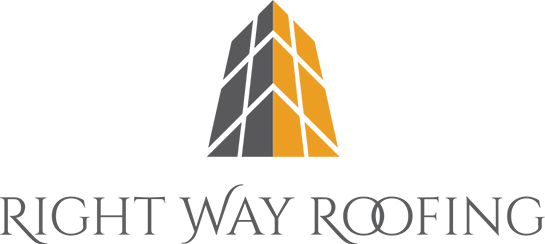Here in Florida, wildlife encounters are not uncommon, even on the rooftops of our homes. From nesting birds to the scurrying paws of curious raccoons, the Sunshine State's fauna often intersects with human habitats. However, while these encounters can bring moments of awe and wonder, they can also leave behind a trail of damage to our roofs. In this blog post, we delve into the common types of roof damage inflicted by Florida's wildlife, exploring the sneaky ways in which creatures big and small can wreak havoc on our shelters, and offering insights into how homeowners can prevent and address these issues effectively.
Squirrel Infestation and Roof Damage
Gnawing on Eaves and Shingles: Squirrels may seem harmless, but their sharp teeth can wreak havoc on a roof. These critters have a penchant for gnawing on eaves and shingles, which can lead to serious structural damage. The constant chewing not only wears down the materials but can also create entry points for water. Once moisture seeps in, it can cause leaks that compromise the integrity of the entire roofing system. Homeowners may notice telltale signs such as bits of torn materials or unusual noises overhead, indicating a potential squirrel problem. It's essential to address these issues promptly to prevent further damage and costly repairs.
Nesting in Roof Vents and Soffits: The cozy and protected environment of roof vents and soffits is irresistible to squirrels looking for a place to nest. Unfortunately, their nesting habits can spell trouble for homeowners. When squirrels take up residence in these areas, they can block airflow and lead to moisture buildup, which is a recipe for mold and wood rot. Moreover, their nesting materials can clog ventilation systems, causing inefficiencies and even fire hazards. Regular inspections of these areas can help detect early signs of infestation, allowing for swift remediation before the squirrels cause irreversible damage to the roof's structure.
Raccoon Roof Intrusions
Tearing Off Roof Shingles: Raccoons are notorious for their strength and dexterity, which they often use to their advantage when infiltrating roofs. These masked marauders can tear off roof shingles with ease, exposing the vulnerable roof decking beneath to the elements. This type of damage is not only unsightly but can also lead to water infiltration, mold growth, and a weakened roof structure. It's crucial for homeowners to be vigilant and look out for signs of raccoon activity, such as scattered debris or scratch marks, to prevent extensive damage that could lead to expensive repairs or even a full roof replacement.
Damage to Roof Insulation: Once inside, raccoons may decide to make themselves at home by burrowing into attic insulation. This behavior not only destroys the insulation but also diminishes its effectiveness, leading to higher energy costs as heating and cooling systems work overtime to compensate for the loss. The presence of raccoons can also pose health risks due to the parasites and diseases they may carry. To safeguard against these intrusions, homeowners should ensure that potential entry points are secured and consider professional wildlife removal services if raccoons are detected.
Bird-Related Roof Damage
Acidic Droppings Eroding Roof Material: Birds may seem like a minor nuisance, but their droppings can have a major impact on the longevity of a roof. The high acidity in bird waste can slowly erode roofing materials, leading to deterioration and potential leaks. Over time, this can significantly shorten the lifespan of a roof, resulting in the need for premature repairs or replacement. Homeowners should be proactive in deterring birds from roosting on their roofs and regularly clean any accumulated droppings to mitigate damage. Additionally, installing bird deterrents can be an effective way to keep these feathered visitors at bay.
Nesting Blockages in Gutters and Drains: When birds decide to nest in gutters and drains, they can cause more than just a minor inconvenience. Their nesting materials can obstruct the flow of water, leading to improper drainage and potential water damage to the roof and home's foundation. This standing water can also attract other pests and contribute to the growth of mold and algae. Regular gutter cleaning and maintenance are essential to prevent these issues, and installing gutter guards can be an effective measure to keep birds from nesting in these critical areas.
Rodent Pathways to Roof Harm
Chewed Wiring and Fire Risk: Rodents like mice and rats are not only a nuisance but also a significant fire hazard when they take up residence in an attic. Their constant gnawing can lead to exposed wires, which increases the risk of electrical fires. The damage can be extensive and often goes unnoticed until it's too late. It's imperative for homeowners to conduct regular inspections of their attic space and to listen for the sounds of rodent activity. Early detection and intervention, including sealing up entry points and consulting with pest control professionals, can help prevent these dangerous situations.
Compromised Roof Integrity from Burrowing: The burrowing habits of rodents can also compromise the structural integrity of a roof. These pests can create extensive networks of tunnels and nests, weakening the roof's support system and potentially leading to collapses. The damage caused by rodents can be extensive, requiring significant repairs or even full roof replacements. Homeowners should be aware of the signs of rodent infestations, such as droppings or disturbed insulation, and take prompt action to address the issue and reinforce their roof's stability.
Insect Infestations and Roof Deterioration
Termite Wood Damage: Termites are silent destroyers, capable of causing catastrophic damage to the wooden components of a roof. These insects feed on wood, and their colonies can grow rapidly, often going unnoticed until significant harm has been done. The structural damage caused by termites can compromise the safety of a home and lead to costly repairs. It's crucial for homeowners to be proactive in termite prevention, including regular inspections and treatments by pest control experts, to protect their homes from these destructive pests.
Bee and Wasp Nest Complications: Bees and wasps can also pose a threat to roofs when they establish nests within the structure. These nests can cause damage to roofing materials and create blockages in vents and chimneys. Additionally, the removal of these nests can be hazardous due to the risk of stings and aggressive behavior from the insects. Professional removal is often necessary to safely and effectively deal with bee and wasp nests, ensuring the integrity of the roof and the safety of the inhabitants.
Need Help with Animal Roof Damage in Florida?
As a Florida homeowner, it's essential to stay vigilant against the various forms of wildlife that can damage your roof. If you're facing any of the issues mentioned above, Right Way Roofing is here to help. Our experienced team can assess and repair any damage, ensuring your roof remains in top condition.
Don't let wildlife turn your roof into their playground. Contact us for professional roofing services that will stand the test of time and nature.


